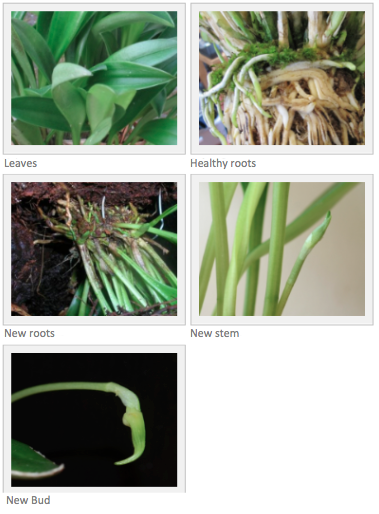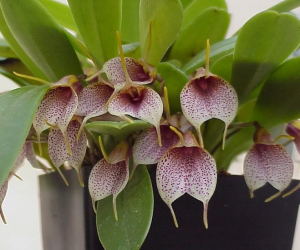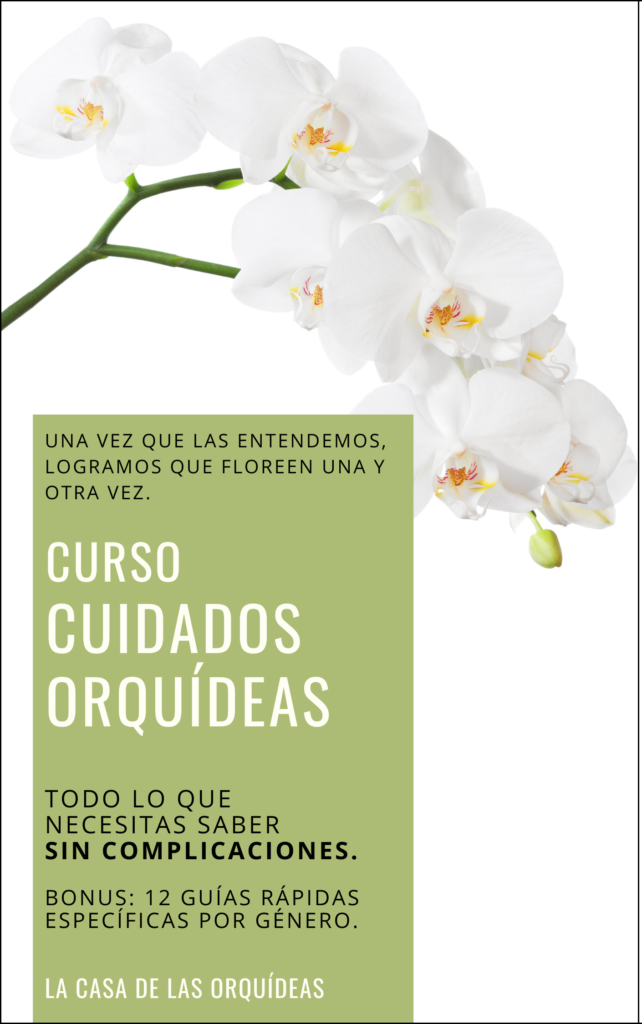+ Spanish
This genus has 500+ especies. They are found from Mexico to Brazil, most of them in very high altitudes (2,500 – 4,000 m) in the Ecuadorian Andes, Colombia and Peru. They live in cloud forests where the RH is very high. They enjoy cold temperatures, like the Dracula genus.
However, some species will develop just fine in climates a little bit warmer and drier. Some examples are: floribunda, striatella, kuhniorum, bicolor infracta, rima rima alba, bangii, minuta, attenuata y echo.
Hybrids are the most adaptable to more temperate conditions.
They can be epiphytic on the trees, litophytes on the rocks and terrestrial, near the ground.
knowing your orchid:

general care:
 WATER: It’s important to water them only in the mornings with room temperature water so that the leaves and new growths have time to dry before the temperature drops in the evening. This genus enjoys abundant waterings during it’s growing period (spring-summer); they have very little water-storage tissue they must not dry up completely between waterings, but they don’t like being soaked either. The frequency of waterings can be spaced once the growing period has passed.
WATER: It’s important to water them only in the mornings with room temperature water so that the leaves and new growths have time to dry before the temperature drops in the evening. This genus enjoys abundant waterings during it’s growing period (spring-summer); they have very little water-storage tissue they must not dry up completely between waterings, but they don’t like being soaked either. The frequency of waterings can be spaced once the growing period has passed.
Excess water can be a focus of infection and can damage the plant. The frequency of waterings will depend on your climate and the time of the year; waterings should be more frequent and abundant during the hot months and if your climate is dry, you may need to water up to 3 times a week, fertilizing only once a week. During the winter and in cold zones, the watering and the feedings can be spaced every 7 to 10 days to avoid root rot. It will also depend on the type of media you’re growing them in.

RELATIVE HUMIDITY:
60% – 80%.
If your HR is to high, it’s very important to have good ventilation to prevent diseases. To increase your HR, please visit our post “Tips to increase Relative Humidity“.
Día: 65ºF – 75ºF
Noche: 55ºF – 60ºF
This genus is ideal for areas with cold weathers. The lower the temperature, the stronger the plant and the flowers will be bigger and longer lasting. During the summer in hotter weathers it’s important to keep them in the shadow reducing it’s temperature so the leaves won’t over stress.
It’s ideal that there is a difference of 15ºF to 20ºF between day and night temperatures to promote new growths (leaves, stems and roots). If your temperature is higher that the ideal, you’ll have to increase the RH, airing and waterings, to avoid premature withering of the flowers and buds and the dehydration of your plant

LOW TO MEDIUM LIGHT: in nature they grow in shadowy forests. However, having so many species, we can try to narrow down that those with soft and thin leaves will enjoy more shadow; and thise with bigger and thicker leaves will appreciate medium light. Using the Shadow Trick (see Basic Care: Light Issues section), the shadow from your hand should be very light grey, almost imperceptible (low light) or a light grey not completely defined (medium light); if the shadow is darker, the that spot is not for this orchid. NEVER IN DIRECT SUNLIGHT!! Ideal locations: east or south facing windows with a sheer curtain.
ARTIFICIAL LIGHT: four tube 40 watt fluorescent fixtures placed 6″ to 12″ above the leaves for 10 to 12 hours a day. But make sure the area is kept cool, you can use a vent or AC.
These are the IDEAL conditions, however, orchids are more adaptable than we think!! You’ll just have to put a bit more effort accommodating them in their new environment. Look for tips in our Magazine!
to know more about nutrition, growing media and basic care, click below:




